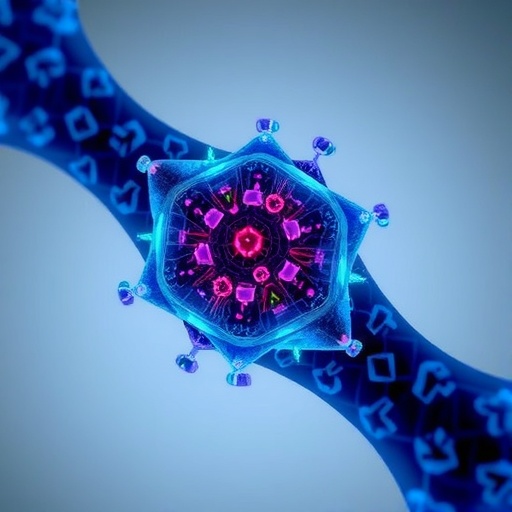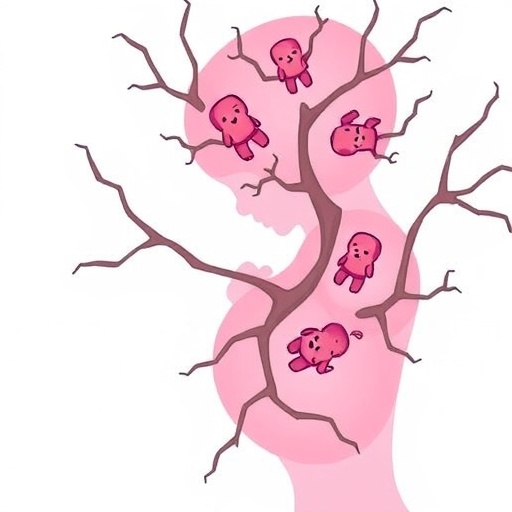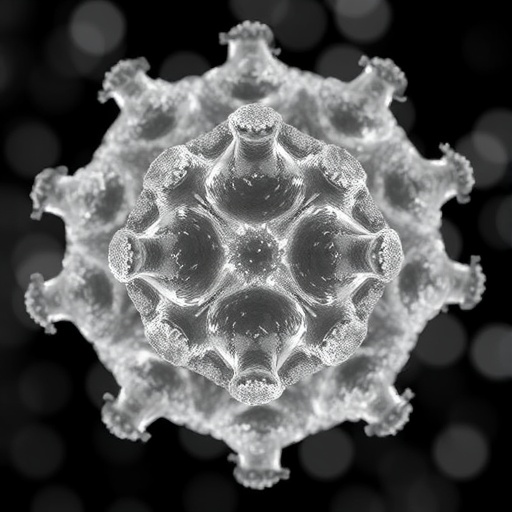PROTECT YOUR DNA WITH QUANTUM TECHNOLOGY
Orgo-Life the new way to the future Advertising by AdpathwayIntradialytic Hypotension’s Hidden Complexities: Unraveling Hemodynamic Phenotypes in Pediatric Continuous Renal Replacement Therapy
In the delicate landscape of pediatric intensive care, continuous renal replacement therapy (CRRT) stands as a vital lifeline for children with acute kidney injury or other severe metabolic disturbances. Yet, despite its critical role, CRRT initiation carries a significant hemodynamic risk—most notably, intradialytic hypotension (IDH). This sudden drop in blood pressure during dialysis jeopardizes organ perfusion, exacerbating morbidity and mortality risks among a vulnerable population. A groundbreaking new study by Thadani et al., recently published in Pediatric Research, sheds unprecedented light on the nuanced hemodynamic trajectories that underpin IDH in pediatric patients undergoing CRRT.
IDH has long been recognized as a frequent and challenging complication during CRRT, but the underlying clinical pathways leading to adverse outcomes have remained elusive. The study bridges this knowledge gap by applying sophisticated unsupervised machine learning techniques to monitor and categorize hemodynamic data over time. By analyzing real-time blood pressure fluctuations alongside multiple clinical variables, the investigators identified distinct phenotypes—or “clusters”—of cardiovascular responses that emerge during the critical window following CRRT initiation. This innovative approach transcends traditional binary classifications of IDH presence or absence, enabling a granular understanding of physiological patterns that influence patient trajectories.
The implications of categorizing IDH into hemodynamic phenotypes are profound. Rather than treating IDH as a monolithic event, clinicians can now potentially tailor interventions based on the unique hemodynamic profile a child exhibits during CRRT. Differentiating between phenotypes characterized by rapid pressure drop and incomplete recovery as opposed to more stable hemodynamic courses, for instance, may inform individualized volume management, vasopressor use, or dialysis parameters. The study highlights a crucial shift toward precision medicine in pediatric nephrology, linking complex data analysis with bedside decision-making.
Technically, the researchers employed longitudinal blood pressure monitoring starting immediately after CRRT connection. These data streams, collected at high resolution, were fed into clustering algorithms that grouped patients by similarities in pressure trends, factoring in both the depth and duration of hypotensive episodes. Importantly, the analysis was agnostic to predefined clinical outcomes, ensuring unbiased phenotype discovery. Subsequent correlation of these phenotypes with clinical endpoints revealed a clear association between certain hemodynamic patterns and worse organ perfusion markers or longer ICU stays.
One of the remarkable insights emerging from the study is the temporal evolution of hemodynamic instability following CRRT initiation. Rather than a single event, IDH unfolds as a dynamic process with varying phases that differ among patients. Some children experience an early precipitous drop in blood pressure that stabilizes quickly, while others endure prolonged and severe hypotension with partial or delayed recovery. Capturing this heterogeneity was only possible through continuous monitoring and machine learning, emphasizing the importance of real-time data in critical care settings.
Pediatric patients present unique challenges in hemodynamic management, given their variable cardiovascular physiology and differing responses to extracorporeal therapies compared with adults. The study underscores that children are not simply “small adults” when it comes to CRRT-induced hypotension. Their hemodynamic phenotypes exhibit distinct features that may influence treatment tolerance and recovery. Understanding these nuances supports safer protocols and advances the development of tailored interventions to minimize IDH’s detrimental effects.
The broader clinical impact of IDH extends beyond immediate blood pressure changes. Sustained hypotension during dialysis can precipitate inadequate organ perfusion, contributing to acute cerebral or myocardial ischemia, worsening renal injury, and multi-organ dysfunction. The study’s findings reinforce the critical need for vigilant hemodynamic surveillance in the hours following CRRT start and support incorporating phenotype-driven strategies to mitigate these risks. Early identification of at-risk patients enables timely therapeutic adjustments, potentially improving survival and long-term neurological outcomes.
The innovative methodology applied in this investigation heralds a new era for studying complex ICU phenomena. Unsupervised learning, by allowing the data to “speak for itself,” uncovers hidden patterns that traditional statistical methods might miss. This data-driven phenotyping moves beyond merely descriptive epidemiology toward mechanistic insights, opening avenues for predictive modeling and personalized medicine. It sets a benchmark for subsequent research exploring cardiovascular dynamics within pediatric critical care and beyond.
While the study is pioneering, the authors acknowledge certain limitations inherent in retrospective analyses, including potential confounders and variability in clinical management across institutions. Prospective studies incorporating these phenotypes into clinical workflows are necessary to verify their predictive validity and impact on intervention outcomes. Additionally, integrating other physiological metrics such as cardiac output or vascular resistance could refine phenotypic definitions and enhance mechanistic understanding.
Notably, this research also intersects intriguingly with the emerging field of artificial intelligence in healthcare. The application of machine learning to continuous physiological data aligns with a future vision where AI supports clinicians by providing early warning signals or recommended actions tailored to individual patient profiles. The study exemplifies the transformative potential of big data approaches to enhance patient care without overwhelming providers with unmanageable information volumes.
Furthermore, the findings prompt a reevaluation of existing CRRT protocols in pediatrics. Current guidelines often lack specificity regarding management of blood pressure instability immediately after therapy initiation. By highlighting distinct hemodynamic phenotypes, the study supports revising protocols to incorporate phenotype-specific monitoring and interventions. Such stratification not only optimizes resource allocation but also fosters a proactive stance in critical care nephrology.
Equally important is the attention brought to pediatric populations—frequently underrepresented in nephrology research despite their unique vulnerabilities. This investigation underscores the necessity of dedicated studies focused on children, who demonstrate distinctive physiologic responses and deserve tailored clinical strategies. The study’s multidisciplinary collaboration among nephrologists, intensivists, and data scientists further exemplifies the interdisciplinary approach needed to tackle complex challenges in pediatric critical care.
In conclusion, Thadani and colleagues provide a landmark contribution toward unraveling the complexities of intradialytic hypotension in pediatric CRRT patients. By harnessing the power of unsupervised machine learning, they reveal that hemodynamic instability is not a uniform phenomenon but comprises distinct phenotypes with variable risk profiles and clinical consequences. These insights pave the way for personalized monitoring and intervention strategies that could significantly improve outcomes for critically ill children reliant on CRRT. The study stands as a testament to the promise of integrating advanced analytics with clinical practice, ushering in a new paradigm of precision pediatric critical care nephrology.
As CRRT continues to evolve, incorporating insights from cutting-edge research like this will be essential to enhance safety, minimize complications, and ultimately save lives. Intradialytic hypotension, once seen as an inevitable side effect of dialysis, may soon be managed with unprecedented sophistication—transforming how clinicians understand and respond to the fragile hemodynamics of childhood critical illness.
Subject of Research: Hemodynamic trajectories, intradialytic hypotension, and outcomes in pediatric patients undergoing continuous renal replacement therapy, analyzed through unsupervised machine learning techniques.
Article Title: Intradialytic hypotension and hemodynamic phenotypes in children following continuous renal replacement therapy initiation.
Article References:
Thadani, S., Silos, C., Horvat, C. et al. Intradialytic hypotension and hemodynamic phenotypes in children following continuous renal replacement therapy initiation. Pediatr Res (2025). https://doi.org/10.1038/s41390-025-04368-4
Image Credits: AI Generated
DOI: https://doi.org/10.1038/s41390-025-04368-4
Tags: acute kidney injury managementblood pressure fluctuations during dialysiscardiovascular responses in CRRTclinical pathways of intradialytic hypotensioncomplications of dialysis in childrencontinuous renal replacement therapy challengeshemodynamic phenotypes in childreninnovative approaches in pediatric nephrologyIntradialytic hypotension in pediatric CRRTmachine learning in pediatric medicineorgan perfusion risks in pediatric patientspediatric intensive care unit research


 4 hours ago
10
4 hours ago
10





















 English (US) ·
English (US) ·  French (CA) ·
French (CA) ·